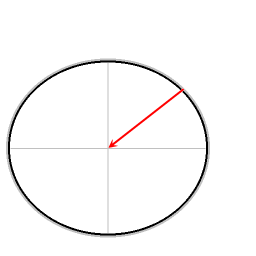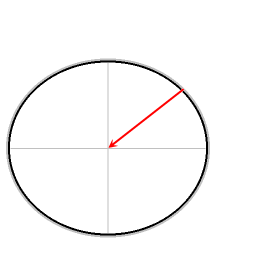When dealing with forces in physics, it is often necessary to find the resultant force of two or more forces acting on an object. The resultant force is the single force that can replace multiple forces and have the same effect on the object. In this blog post, we will explore how to find the resultant force of two forces, as well as how to calculate the resultant force of multiple forces using mathematical equations and principles.

III. The Mathematical Approach to Finding Resultant Force

A. The Resultant Force Equation
To find the resultant force of two forces, we can use the equation:
![]()
Where ( F_1 ) and ( F_2 ) are the magnitudes of the two forces, and ( theta ) is the angle between them.
B. The Formula for Resultant Force
Another formula that can be used to find the resultant force is derived from the law of cosines. It is given by:
![]()
This formula is particularly useful when the angle between the forces is obtuse (greater than 90 degrees).
IV. How to Calculate the Resultant Force of Two Forces
A. Step-by-Step Guide to Calculating Resultant Force
To calculate the resultant force of two forces, follow these steps:
- Identify the magnitudes and directions of the two forces.
- Determine the angle between the forces.
- Use either the resultant force equation or the formula derived from the law of cosines to calculate the resultant force.
B. Worked Out Example: Calculating Resultant Force of Two Forces
Let’s consider an example to better understand how to calculate the resultant force. Suppose we have two forces: ( F_1 ) with a magnitude of 10 N acting at an angle of 30 degrees, and ( F_2 ) with a magnitude of 8 N acting at an angle of 60 degrees.
Using the resultant force equation, we can calculate the resultant force as follows:
![]()
Simplifying the equation, we get:
![]()
![]()
![]()
Therefore, the resultant force of the two forces is approximately 15.62 N.
V. How to Determine the Resultant Force of Two Vectors at an Angle
A. Understanding the Role of Angles in Resultant Force
When the two forces are not acting along the same line, it is essential to consider the angle between them. The angle affects the magnitude and direction of the resultant force. If the forces are acting in the same direction, the angle is 0 degrees, and the resultant force is the sum of the two forces. If the forces are acting in opposite directions, the angle is 180 degrees, and the resultant force is the difference between the two forces.
B. Step-by-Step Guide to Calculating Resultant Force of Two Vectors at an Angle
To determine the resultant force of two vectors at an angle, follow these steps:
- Resolve the forces into their horizontal and vertical components.
- Add the horizontal components and the vertical components separately.
- Use the Pythagorean theorem to find the magnitude of the resultant force.
- Use trigonometry to find the angle of the resultant force.
C. Worked Out Example: Calculating Resultant Force of Two Vectors at an Angle
Let’s consider an example to illustrate how to calculate the resultant force of two vectors at an angle. Suppose we have two vectors: ( vec{F_1} ) with a magnitude of 10 N at an angle of 30 degrees, and ( vec{F_2} ) with a magnitude of 8 N at an angle of 60 degrees.
Using trigonometry, we can calculate the horizontal and vertical components of each vector:
![]() horizontal component:
horizontal component: ![]() N
N![]() vertical component:
vertical component: ![]() N
N
![]() horizontal component:
horizontal component: ![]() N
N![]() vertical component:
vertical component: ![]() N
N
Next, we add the horizontal components and the vertical components separately:
Horizontal component of resultant force: ![]() N
N
Vertical component of resultant force: ![]() N
N
Using the Pythagorean theorem, we can find the magnitude of the resultant force:
![]()
![]()
Simplifying the equation, we get:
![]()
![]()
![]()
![]()
![]()
To find the angle of the resultant force, we can use inverse trigonometric functions:
![]()
![]()
Simplifying the equation, we get:
![]()
![]()
![]()
![]()
Therefore, the resultant force of the two vectors is approximately 17.39 N at an angle of 43.65 degrees.
VI. Advanced Calculations: Finding the Resultant Force of Multiple Forces

A. How to Calculate the Resultant Force of Four Forces
When dealing with multiple forces, we can find the resultant force by applying the parallelogram law of vector addition. This law states that if two vectors are represented in magnitude and direction by the sides of a parallelogram, then the resultant vector is represented in magnitude and direction by the diagonal of the parallelogram drawn from the same starting point.
To calculate the resultant force of four forces, follow these steps:
- Draw a vector diagram, representing the magnitudes and directions of the four forces.
- Complete the parallelogram using the given forces as adjacent sides.
- The diagonal of the parallelogram represents the resultant force.
- Measure the magnitude and direction of the diagonal using a ruler and protractor.
B. Worked Out Example: Calculating Resultant Force of Four Forces

Let’s consider an example to illustrate how to calculate the resultant force of four forces. Suppose we have four forces with magnitudes of 5 N, 8 N, 10 N, and 12 N, acting at angles of 45 degrees, 90 degrees, 135 degrees, and 180 degrees, respectively.
Using a vector diagram, we can represent these forces as arrows:
Completing the parallelogram using the given forces, we find that the diagonal represents the resultant force.
Measuring the magnitude and direction of the diagonal, we can determine the resultant force. Let’s assume that the magnitude is approximately 16 N, and the direction is 30 degrees above the positive x-axis.
Therefore, the resultant force of the four forces is approximately 16 N at an angle of 30 degrees.
Also Read:
- Natural frequency and forced vibrations
- How to calculate force of gravity
- Freezing point with intermolecular forces
- Gravitational force 2
- Atomic force microscopy
- How to find tangential force
- Gravitational force formula
- How to find normal force between two blocks
- Central force examples
- Force on moving charge in magnetic field
Hi…I am Keerthana Srikumar, currently pursuing Ph.D. in Physics and my area of specialization is nano-science. I completed my Bachelor’s and Master’s from Stella Maris College and Loyola College respectively. I have a keen interest in exploring my research skills and also have the ability to explain Physics topics in a simpler manner. Apart from academics I love to spend my time in music and reading books.
Let’s connect through LinkedIn